Quick Tips for Optimising Conversions 📈
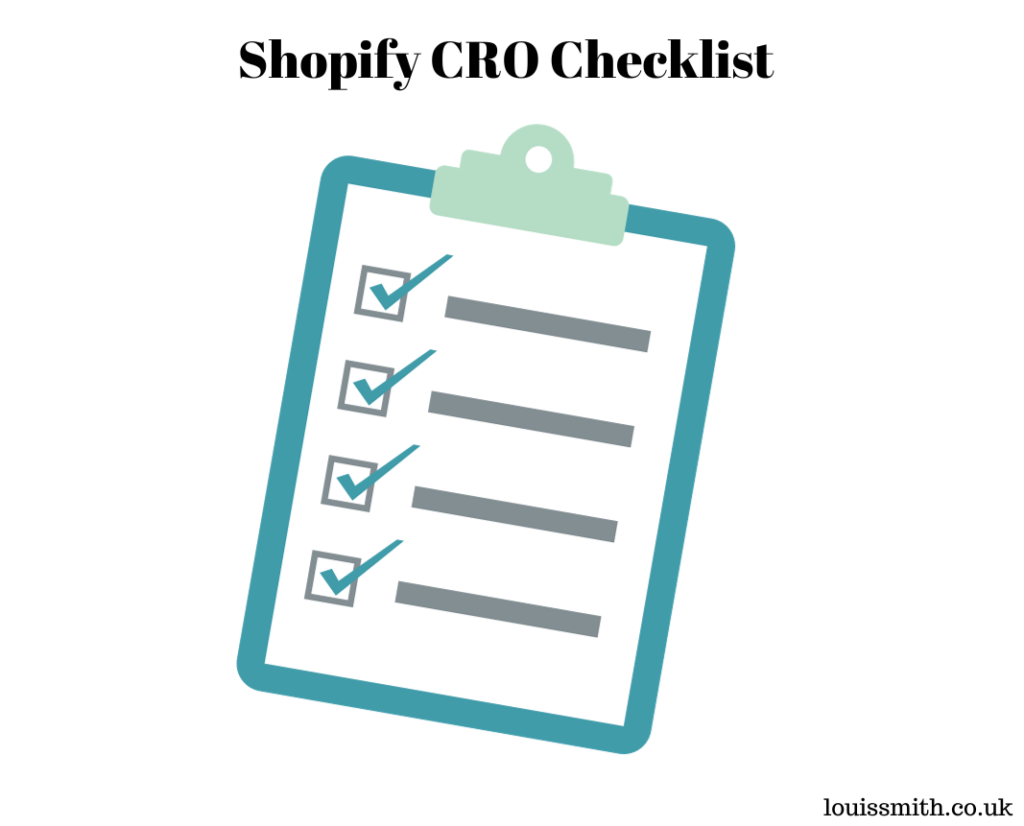
Looking to rocket conversions for your Shopify store?
Let me share some tips (from experience)!
I’ve worked with several Shopify brands, and I understand the importance of optimising websites for conversions – if you want to grow your business
Conversion Rate Optimisation (CRO) can have a really significant impact and help increase the chances of making a sale. I have seen this firsthand.
What you need to do is address potential issues that may be holding visitors back from completing the checkout process.
There are several best practices and strategies available, and it can be overwhelming to know where to start. That’s where a Shopify CRO checklist comes in handy.
A well-structured Shopify CRO checklist ensures that you cover all the essential aspects of my online store’s optimisation.
By following this comprehensive guide, you can make informed decisions about which tactics to prioritise. With all the tools and resources available, it’s an exciting time to be in the world of e-commerce.
So let’s dive in and start optimising your store for better performance and more sales.
What is CRO in Shopify? 📈

If you are new to Shopify and SEO generally, you might wonder what Conversion Rate Optimisation (CRO) is. And why it’s essential for your online store.
Let me share with you the basic idea of CRO and how it can help improve your store’s performance.
CRO is the process of enhancing the percentage of website visitors that convert into customers or take desired actions.
In Shopify, this can involve;
- Optimising landing pages
- Streamlining the checkout process
- Improving user experience
It is important to keep in mind that every change you make to your store can potentially lead to higher sales or a drawdown.
One good example of how CRO works is through welcome emails. Studies have shown that these emails can increase the unique open rate by 86% and have a 91.43% open rate. This can lead to better long-term customer relationships.
Another critical part of CRO in Shopify involves identifying potential issues that hold visitors back from completing a purchase. By addressing these issues, you’ll make it easier for them to buy from your store and ultimately increase conversions.
Major Component of Shopify CRO
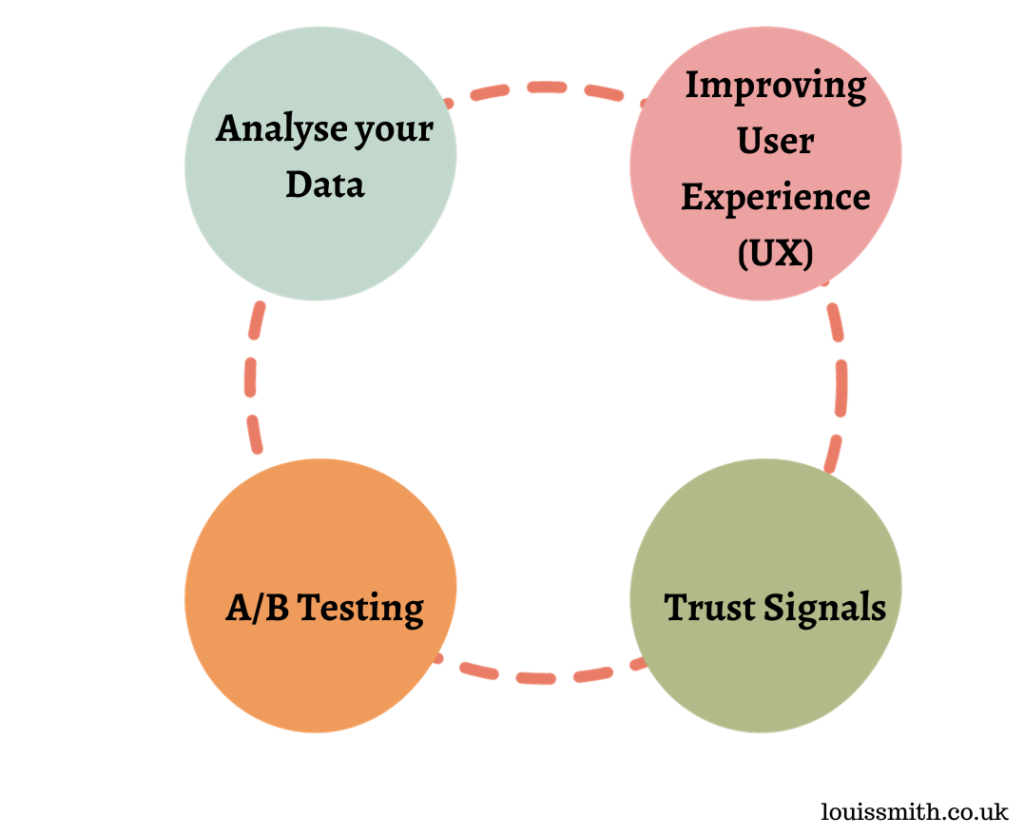
When it comes to Shopify, there are certain core components that I think are particularly important to focus on.
Let me share a few of those components with you.
#1 Analyse your data
It’s very important to analyse your data to understand your store’s strengths and weaknesses. Tools like Shopify’s built-in dashboard and Google Analytics can help you track visitors’ actions and spot patterns that indicate areas of improvement.
#2 Improving user experience (UX)
A well-designed store with easy navigation, clear product descriptions, and visually appealing images helps keep visitors engaged. This, in turn encourages them to complete a purchase. Don’t forget to optimise your store for mobile users, as a significant percentage of online shopping is done via smartphones.
#3 A/B testing
No CRO strategy would be complete without A/B testing. This involves creating different variations of a page or element in your store. Then, you compare their performance and eventually implement the version that yields better results.
This process allows you to make data-driven decisions and fine-tune your store according to your customer’s preferences.
#4 Trust signals
Lastly, I’d like to highlight the importance of trust signals. Online shoppers are naturally cautious, so it’s essential to build their confidence in your store.
This can be achieved by showcasing testimonials, offering secure payment options, and adopting transparent shipping and return policies. These trust signals reassure visitors that shopping with you is safe and risk-free.
Knowing Your Target Audience
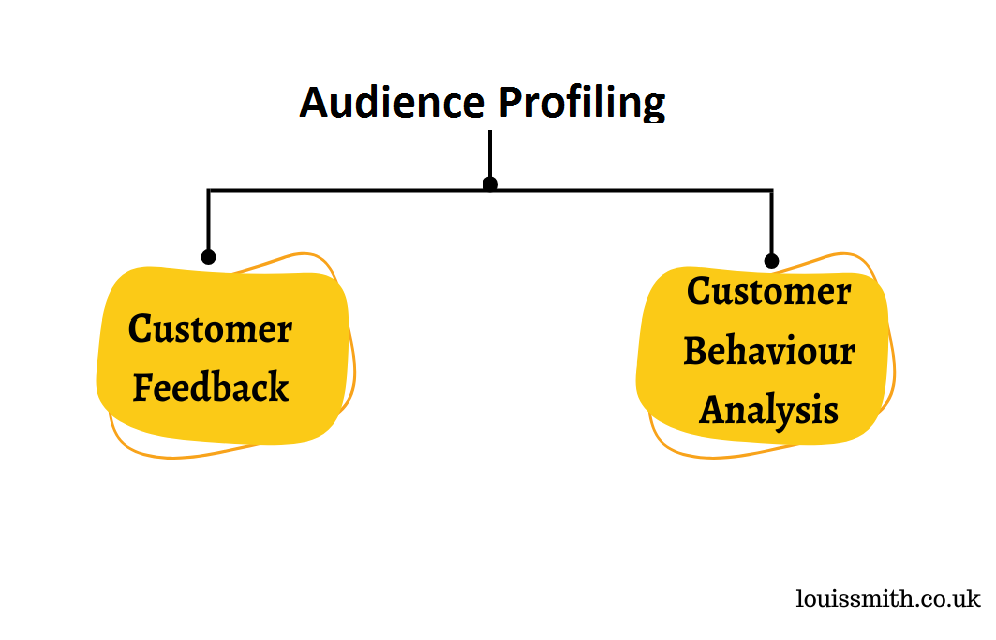
#1 Customer Behaviour Analysis
It’s important to know your target audience. One way you can do this is by analysing customer behaviour.
Using tools like Shopify’s built-in dashboard or Google Analytics, you can track visitors’ actions in your online store. This data helps you identify what’s working well and what needs improvement.
This way, it’s much easier to tailor your marketing strategies to better reach customers.
#2 Customer Feedback
Another important aspect of understanding your target audience is gathering and analysing customer feedback.
A direct way to collect feedback is through customer reviews on your products or services. By encouraging your customers to leave reviews.
You can gather valuable insights into what they like, what they dislike, and how you can improve your products and overall customer experience.
Aside from direct product reviews, you can also reach out to your customers directly through surveys, emails, or social media and ask for feedback.
With this feedback, you can make adjustments to your store and marketing strategies. This will enable you to better connect with your target audience and ultimately boost your conversion rate.
Shopify CRO Tools
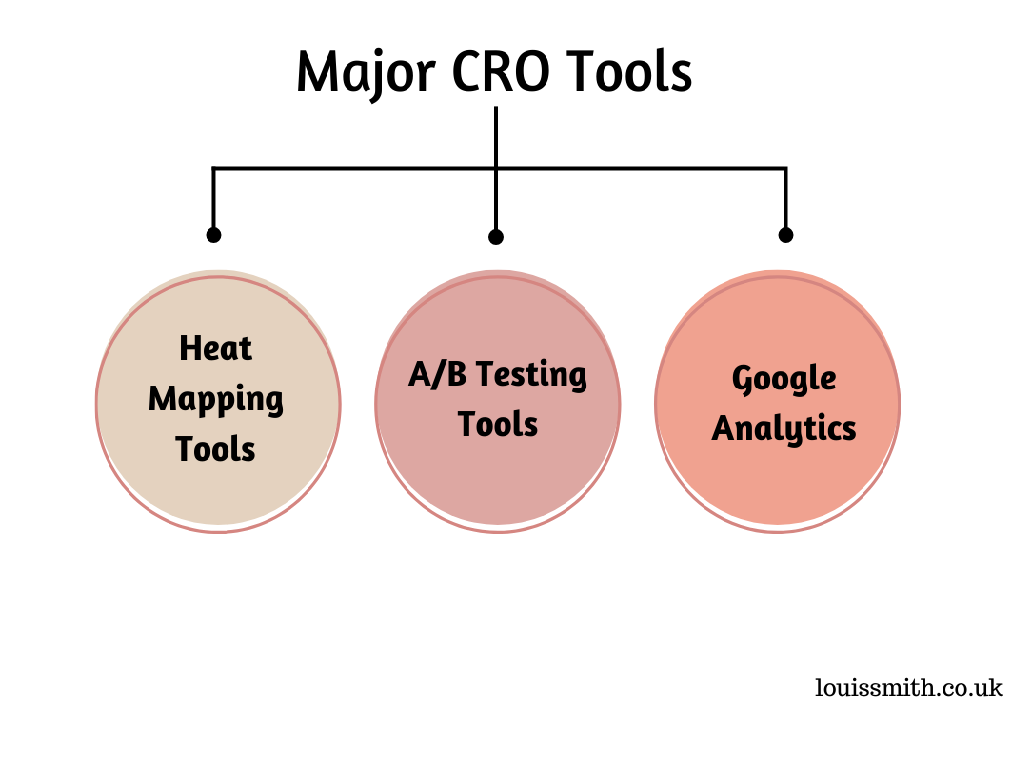
Having the right tools is essential for optimising your store’s conversion rates.
In this section, I will be discussing a few different tools that I’ve found helpful in my experience.
I will break this down into three sub-sections:
- Heat Mapping Tools
- A/B Testing Tools
- Google Analytics
#1 Heat Mapping Tools
Heat mapping tools are important for understanding how customers interact with your website. They help you visualise where visitors click, scroll, and spend the most time on the site.
This information is valuable in identifying areas of improvement and making data-driven changes to your store. Some popular heat mapping tools for Shopify include Hotjar and Crazy Egg.
#2 A/B Testing Tools
A/B testing, also known as split testing, is another critical component of my Shopify CRO strategy. It allows me to test different variations of a single element on a client’s website. I normally run split tests on elements such as images, headlines, or button colours – to see which performs better.
By constantly testing and iterating, I can ensure my client’s store is always working towards higher conversions. Some recommended A/B testing tools for Shopify are Optimizely and VWO.
#3 Google Analytics
I use Google Analytics to track a website’s performance and gather valuable insights about its visitors. It helps me understand;
- Where traffic comes from
- Which pages have the highest bounce rates
- How visitors behave on my website
By analysing this data, I can make informed decisions about how to optimise the store for better conversions. Google Analytics is an essential tool for any Shopify store owner looking to improve their CRO efforts.
How to Design a High-Conversion Homepage?
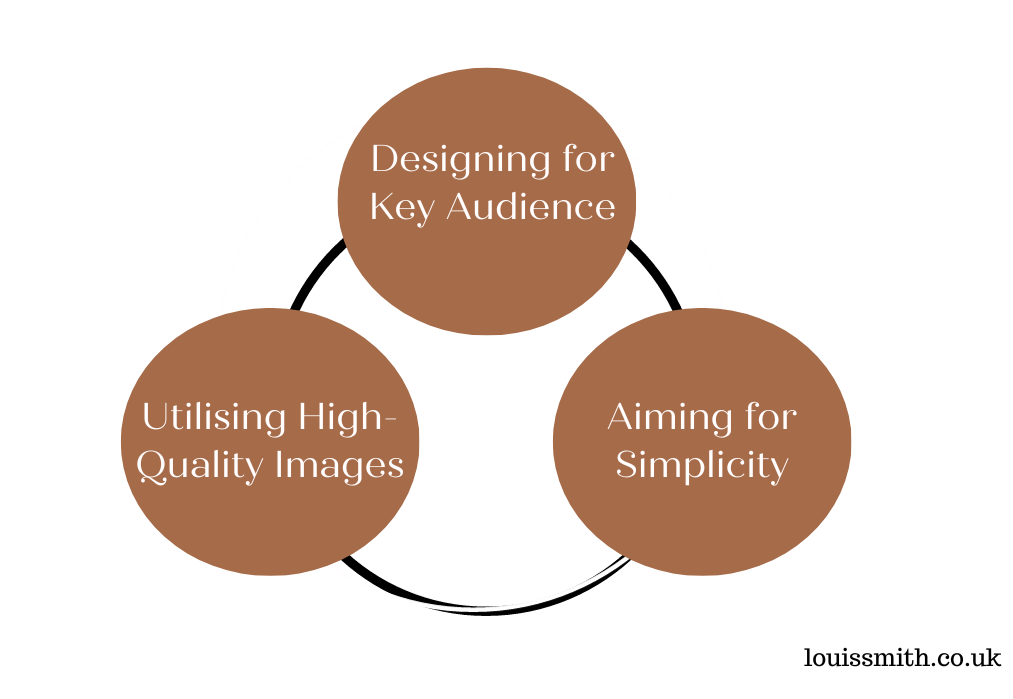
In this section, I’ll share some tips on how to achieve a high-converting homepage:
- Design for key audience
- Aim for simplicity
- Utilise high-quality images
#1 Designing for Key Audience
First, it’s essential to consider your target audience. Make sure you understand who your potential customers are. And what they’re looking for when visiting your Shopify store.
By tailoring the homepage design to cater to their preferences, you’ll increase the chances of attracting and retaining their interest.
Here are some things I do to achieve this:
- Research: Conduct surveys or analyse customer data to identify common preferences, demographics or shopping behaviours.
- Customisation: Personalise content, layout, and colour schemes based on the identified target audience’s preferences.
#2 Aiming for Simplicity
I believe that simplicity is one of the most effective factors for a high-converting homepage.
How?
By keeping my homepage clean and clutter-free, it becomes easier for visitors to navigate and find what they’re looking for…. Bingo!
To achieve this, I focus on:
- Clear CTA (Call-to-Action): I make sure to have a prominent and straightforward CTA that encourages users to take the desired action.
- Minimalist design: I avoid adding unnecessary elements or distractions on the homepage. And I organise content in a way that’s easy to understand.
#3 Utilising High-Quality Images
An important aspect of any homepage design is the imagery used. I have found that using high-quality images is essential for catching visitors’ attention and showcasing the products available in my Shopify store.
To ensure impressive visuals, I consider the following aspects:
- Size and Resolution: I use images with a suitable resolution to ensure they appear crisp and clear on various devices.
- Consistency: I aim to maintain a consistent style across all images on the homepage to create a cohesive look and feel.
- Brand Identity: I make sure the images used align with the brand’s values and messaging. This helps to create a strong brand presence.
Improving Product Page Performance
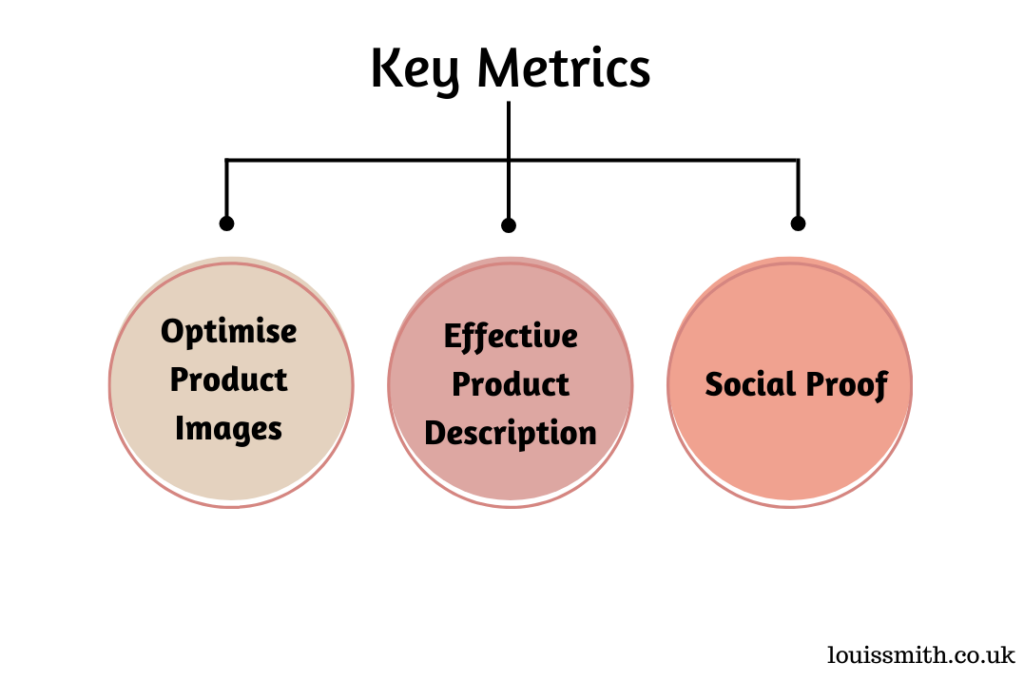
In this section, I’ll discuss three key sub-sections that can help improve your product page’s performance:
- Optimising product images
- Crafting effective product descriptions
- Incorporating social proof
#1 Optimise Product Images
I believe that having high-quality and visually appealing product images is essential for attracting customers.
Here are some tips I follow:
- Use clear and high-resolution images to showcase the product’s features.
- Add multiple images from different angles to provide a comprehensive view of the product.
- Compress the images to reduce loading time without sacrificing quality.
#2 Effective Product Description
An engaging and informative product description plays a pivotal role in convincing customers to make a purchase.
Here’s what I do to write an effective product description:
- Be concise and clear, outlining the product’s main features and benefits.
- Use bullet points and bold text to highlight essential information, making it easier for customers to skim through the content.
- Adjust the tone of voice to resonate with the target audience while maintaining a friendly approach.
#3 Social Proof
I’ve found that incorporating social proof on a product page can significantly improve trust and credibility.
Here are some ways I include social proof on my client’s product pages:
- Display customer reviews and ratings, giving potential buyers an idea of the product’s quality based on other’s experiences.
- Showcase user-generated content, such as photos and testimonials, to demonstrate how real customers are using and enjoying the product.
- Highlight any awards or recognitions the product has received to instil a sense of credibility and expertise.
By focusing on these three factors, I’ve seen a noticeable improvement in my client’s product pages’ performance. And this has led to higher conversions and a more successful online store.
Effective Checkout Optimisation
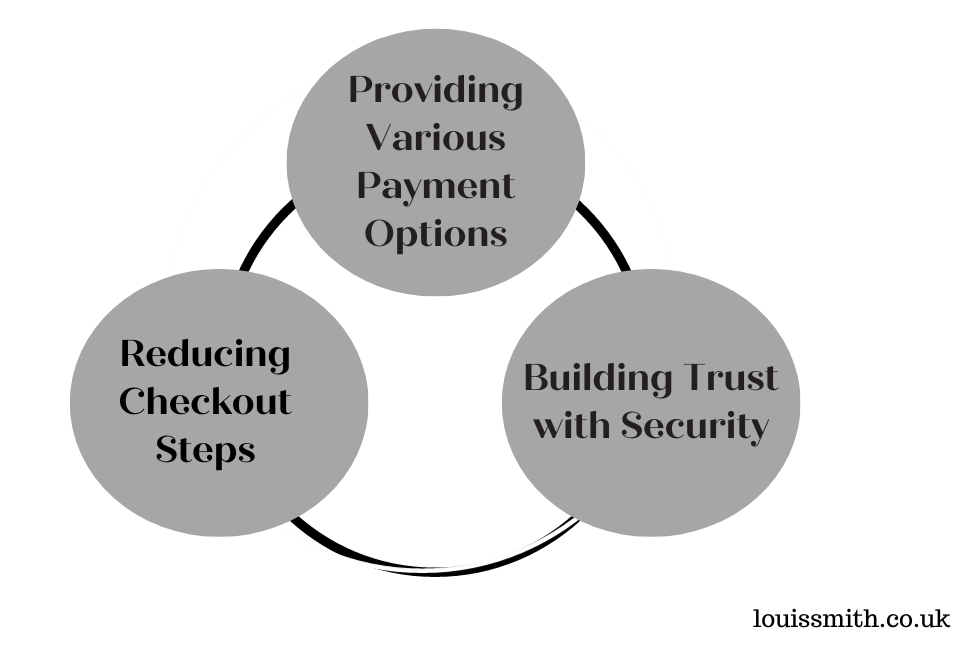
I will share my thoughts on a few essential aspects of checkout optimisation.
We’ll focus on;
- Reducing checkout steps
- Providing various payment options
- Building trust with security
#1 Reducing Checkout Steps
One effective approach to optimising the checkout process is by reducing the number of steps involved.
I have found out that a shorter checkout process can lead to higher completed transactions.
Customers are less likely to abandon their orders due to a lengthy and complicated process.
To achieve this, I usually do the following:
- Combining: Allow customers to fill in both billing and shipping information in a single step instead of splitting them into separate steps.
- Guest Checkout: Give customers the option to make a purchase without creating an account, which significantly reduces the time spent during checkout.
#2 Providing Various Payment Options
I always ensure that my client’s store provides a wide variety of convenient and popular payment options. This has been crucial in maximising conversions.
By offering more payment choices, you can cater to a broader range of customers. This increases the likelihood that they’ll complete their purchase.
Some options to consider include:
- Credit Cards: Major credit cards like Visa, MasterCard, and American Express should be accepted to accommodate the majority of customers.
- Digital Wallets: Services like Apple Pay, Google Wallet, and PayPal offer convenience as they store customers’ payment information securely.
#3 Building Trust with Security
Ensuring that customers feel secure shopping on your site is important for building trust and increasing conversions.
You can ensure this by implementing various security measures to protect customers’ data.
Some best practices for creating a secure environment include:
- SSL Certificates: These certificates encrypt sensitive information, such as credit card details, during transactions. It ensures that a customer’s info cannot be intercepted by a third party. Adding an SSL certificate also increases trust in the website.
- Security Badges: Displaying trust badges from well-known security providers like Norton, McAfee, and Trustwave can provide assurance to customers that their data is safe.
Maintaining Customer Retention
Now, let’s look at two effective strategies for maintaining customer retention within your Shopify store.
- Engaging Email Marketing
- Loyalty Programmes
Engaging Email Marketing
Email marketing is an effective strategy to keep customers engaged and coming back to your store.
It’s important to write personalised, relevant emails that capture their attention and interest. This can include newsletters, product updates, and special offers tailored to their preferences.
To make my emails easy to read and understand, I often use bullet points and bold text for emphasis.
You can also do the following;
- Personalisation: Know my customers and use their names, preferences, and purchase history.
- Relevance: Share content and offers that are most suitable to each customer’s interests.
- Timing: Send emails at the right time to increase open rates and engagement.
Frequent and effective communication through email marketing can lead to increased customer loyalty and repeat business.
Loyalty Programmes
I find that creating a loyalty programme is an excellent way to reward customers and encourage them to keep coming back.
It can help you build a long-lasting relationship between your brand and its customers. Here’s how I advise my clients to structure their loyalty programme:
- Earn points for actions like making a purchase, referring a friend, or leaving a review.
- Redeem points for discounts, free shipping, or other exclusive perks.
- Tiered rewards to provide extra benefits to the most loyal customers, leading to increased motivation for continued engagement.
Understanding Shopify CRO Analytics
Analytics play a crucial role in understanding the performance of any online store.
By using tools like Shopify’s built-in dashboard or Google Analytics, I can always track visitors’ actions and uncover a store’s strengths and weaknesses.
It’s often interesting to observe the different behaviours of new visitors and returning visitors. Here are some statistics that may interest you;
- Returning visitors add items to shopping carts 65.16% more than new visitors
- Returning visitors convert 73.72% more
- Returning visitors spend 16.15% more per transaction
Looking at your ecommerce website’s data, you can identify and focus on key areas that need improvement.
For example, you might notice high bounce rates on specific pages, which could indicate irrelevant or unappealing content.
To address this, I experiment with different layouts, images, and call-to-action buttons to appeal better to the target audience.
Conclusion
I strongly believe that conversion rate optimisation (CRO) is one of the fastest and most efficient ways to convert your existing website traffic into paying customers. And even the data supports that.
With years of proven experience working with renowned brands in the UK and the US, I can help you plan and implement a working CRO strategy.
I believe that every Shopify store has incredible potential, and I can help you unlock yours.
Let’s connect and discuss how I can help you achieve remarkable results for your Shopify store.
Are you ready to improve your Shopify store’s CRO? Let’s chat!
Ready To Migrate To Shopify? ✅
Create a winning SEO/UX campaign with a Shopify CMS for your brand:
- Get worldwide custom support
- Build an eCommerce brand on a thriving platform
- Increase your organic sales
- Better user experience (UX)
- Improved conversion rate optimisation
GET IN TOUCH
Schedule an SEO session and get started on the path to grow your eCommerce store
You’re just one click away from improving your product rankings, increasing sales, and growing your brand’s market share against competitors.

